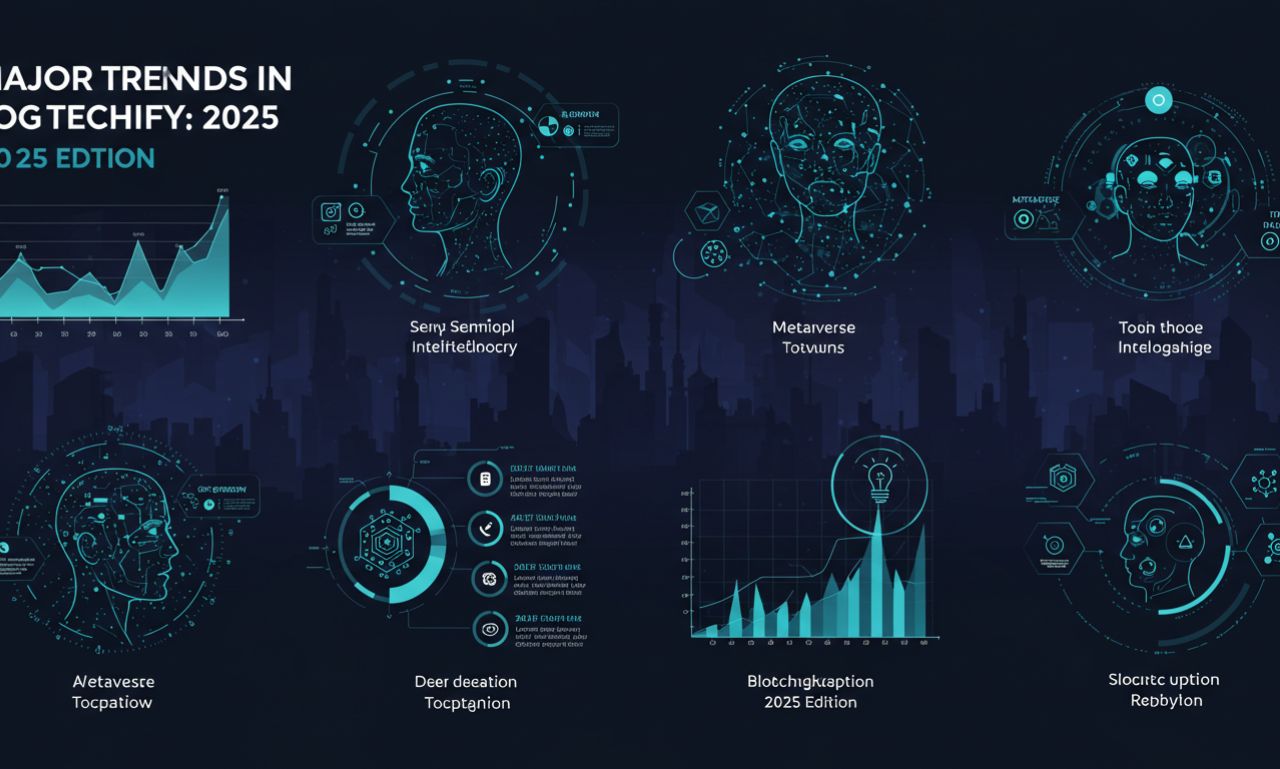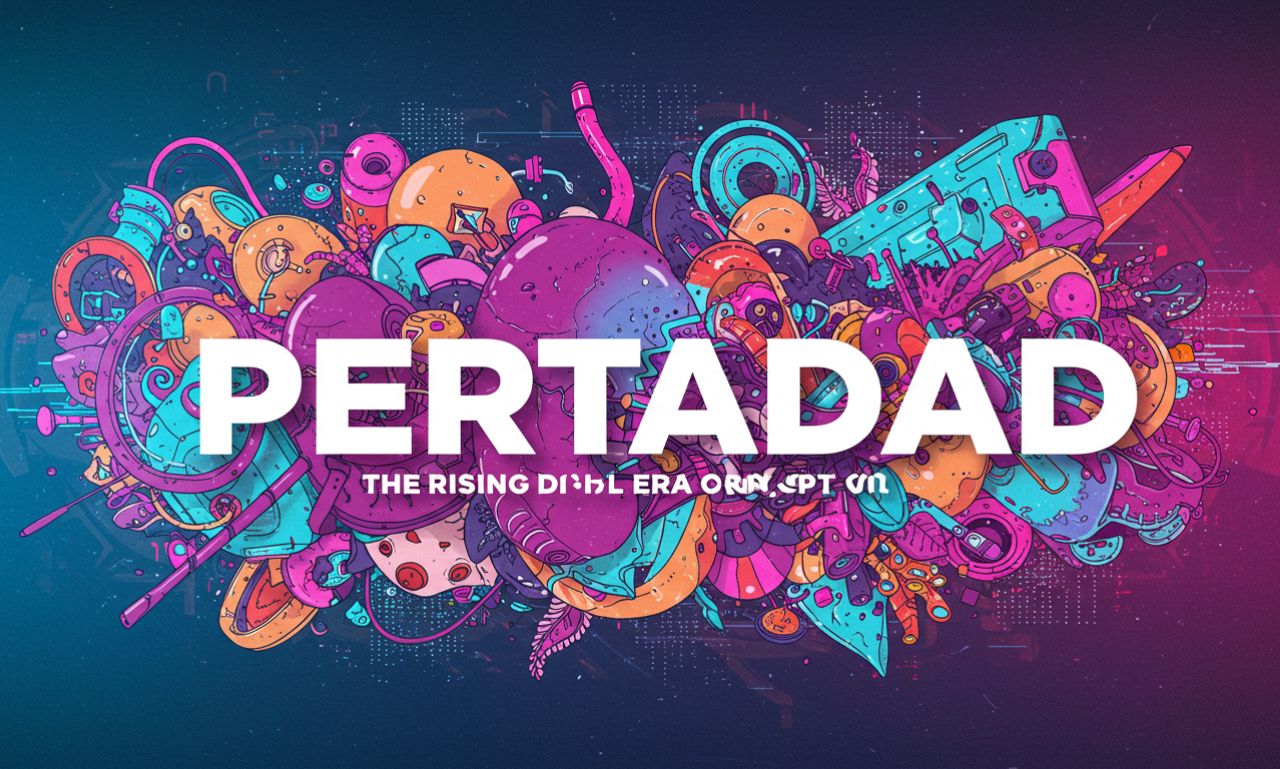Major Trends in Technology TogTechify, we dedicate ourselves to uncovering the major trends in technology that will define 2025 and beyond. In this rapidly evolving digital age, some technologies are shifting from novelty to necessity. In this article, we explore trends like artificial intelligence, blockchain, immersive media, sustainable tech, cybersecurity, and the connected ecosystem—and how they’re transforming business, society, and daily life.
Artificial Intelligence & Generative Models
One of the most visible major trends is the continued rise of artificial intelligence (AI) and generative models. AI is no longer limited to labs or tech firms; it’s now embedded across sectors:
-
Generative AI tools are being used for content creation—text, images, music, even video. These models reduce the time needed for creative work and allow nonexperts to produce professional-quality media.
-
AI in decision support is growing. Enterprises use predictive analytics to forecast demand, manage supply chains, and optimize operations.
-
Multimodal AI—models that understand text, image, audio, and possibly vision simultaneously—is gaining traction. This shift enables more humanlike interactions and richer data fusion.
-
Ethical AI, bias mitigation, and transparency are also part of the conversation. As AI becomes pervasive, frameworks for responsible use grow in importance.
This trend is foundational—most other emerging tech builds on or interacts with AI.
Blockchain, Decentralization & Web3
Blockchain is no longer just about cryptocurrencies. On TogTechify, we see decentralized technologies as a core pillar of future architecture:
-
Decentralized finance (DeFi) continues maturing, with more stable, secure protocols for lending, insurance, and asset management.
-
Smart contracts find new adoption in supply chains, identity verification, and legal automation, enabling trustless, transparent workflows.
-
NFTs and tokenization expand beyond art into real estate, licensing, and intellectual property.
-
The integration of blockchain with IoT and edge computing helps create secure, decentralized networks.
These systems aim to reduce reliance on centralized intermediaries and promote transparency.
Immersive Media: AR, VR & Mixed Reality (XR)
Immersive media is another major trend in technology that TogTechify tracks closely:
-
Augmented Reality (AR) is being used more in retail (virtual try-ons), education (interactive labs), and navigation.
-
Virtual Reality (VR) is expanding beyond gaming into training, therapy, and remote collaboration. Think virtual classrooms or medical simulations.
-
Mixed Reality (MR) blends real-world elements with virtual assets—useful in industrial maintenance or design.
-
The metaverse concept—persistent virtual worlds—continues evolving. Though still early, infrastructure and standards (avatars, digital property) are actively forming.
These immersive experiences help bridge physical and digital realms, making online interaction richer.
Internet of Things, Edge & 5G / 6G Networks
Connectivity and ubiquity are central to what we call major trends in technology:
-
IoT (Internet of Things) devices are now everywhere—homes, factories, cities. The networked sensors and actuators drive smart environments.
-
Edge computing brings processing closer to devices, reducing latency and bandwidth strain. Many real-time applications (e.g. autonomous systems, AR) rely on this.
-
5G deployment continues globally, enabling higher speeds, lower latency, and better support for dense networks.
-
Looking ahead, 6G and terahertz communications are under research. These promise ultra-high speed and new modalities of connectivity.
Combined, these trends form the backbone for connected, intelligent services.
Sustainability, Green Tech & Climate Focus
Major Trends in Technology TogTechify is increasingly judged not just by features but by sustainability:
-
Green data centers, powered by renewable energy and cooled efficiently, are becoming a priority for major cloud providers.
-
Energy harvesting, smart grids, and distributed energy systems help optimize power consumption.
-
Circular economy tech—designing electronics for reuse, recycling, and modular repair—is gaining traction.
-
In materials science, innovations like biodegradable electronics or eco-friendly polymers are emerging.
For TogTechify, sustainable tech is not a side trend—it’s a requirement for credible progress.
Cybersecurity, Privacy & Zero Trust Architectures
With greater digital adoption come greater risks. This is another major trend we emphasize:
-
Zero trust security models—trust no user or device by default—are standardizing.
-
AI-powered threat detection uses machine learning to identify anomalies and attacks proactively.
-
Privacy-preserving techniques like federated learning or differential privacy allow analytics without exposing raw data.
-
Regulatory frameworks (GDPR, CCPA, others) are pushing organizations to adopt stronger compliance and transparency controls.
In a more connected world, security and privacy are nonnegotiable.
Quantum Computing & Next-Gen Algorithms
Though still emerging, quantum computing is one of the major trends tracked on TogTechify:
-
Researchers are developing quantum algorithms for optimization, cryptography, and simulation—beyond what classical computers can achieve.
-
Quantum-safe cryptography is becoming urgent, as future quantum systems could decrypt many existing encryption schemes.
-
Hybrid models combining classical and quantum computing are probable intermediates in coming years.
While operational quantum systems are niche today, their influence on future architectures is substantial.
Human-Centric Tech & Ethical Design
A less flashy but equally important trend involves technology built around human needs:
-
Inclusive design ensures tech is accessible to users with disabilities.
-
Emotion-aware computing and affective AI systems respond adaptively to users’ feelings.
-
Explainable AI (XAI) grows necessary so decisions made by models are transparent.
-
Ethical frameworks—especially in content moderation, surveillance, and algorithmic bias—are becoming central to product roadmaps.
TogTechify sees value in human-first technologies that prioritize dignity, fairness, and transparency.
Challenges & Risks in Adopting Trends
Recognizing these trends is one thing; implementing them is another. Some common barriers include:
-
Legacy systems—many enterprises still run outdated infrastructure, making migration costly.
-
Talent gap—expertise in AI, quantum, blockchain is in high demand and low supply.
-
Regulation lags—laws struggle to keep pace with technology, leading to uncertainty.
-
Ethical missteps—unintended biases, data misuse, or surveillance creep can erode trust.
-
Security exposure—new tech often comes with new attack surfaces.
TogTechify advises a balance: adopt steadily, validate incrementally, and monitor risks.
How Industries Are Responding
Across sectors, the adoption of these major trends is visible:
-
Healthcare uses AI for diagnostics, remote monitoring, and drug discovery.
-
Manufacturing and logistics integrate IoT and automation for predictive maintenance and smart supply chains.
-
Finance leverages blockchain, AI, fraud detection, and algorithms.
-
Retail and eCommerce deploy AR for shopping, AI for recommendation, and IoT in logistics.
-
Government and smart cities adopt IoT, green infrastructure, and blockchain for transparency.
These transformations underscore that no industry remains untouched by technology’s advance.
What TogTechify Predicts for 2026–2030
Looking forward, we expect:
-
Wider democratization of AI via low-code or no-code platforms.
-
Seamless spatial computing where AR/VR is part of daily life.
-
Ubiquitous edge intelligence in devices, from drones to wearables.
-
Quantum hybridization where quantum components complement classical systems.
-
Tech carbon budgets to ensure climate goals remain integral to innovation.
TogTechify believes the next half decade will refine and consolidate these trends rather than replace them.
Conclusion
At TogTechify, we view major trends in technology not as distant dreams but as evolving tools reshaping how we live, work, and interact. From AI and blockchain to immersive media, sustainability, security, and quantum innovation, the 2025–2026 horizon is full of opportunity.
Adopting these trends thoughtfully requires vision, investment, and ethical grounding. But for forward-looking organizations and individuals, understanding them is no longer optional—it’s essential. Embrace these changes, stay curious, and you’ll be better equipped to steer through tomorrow’s digital frontier.




